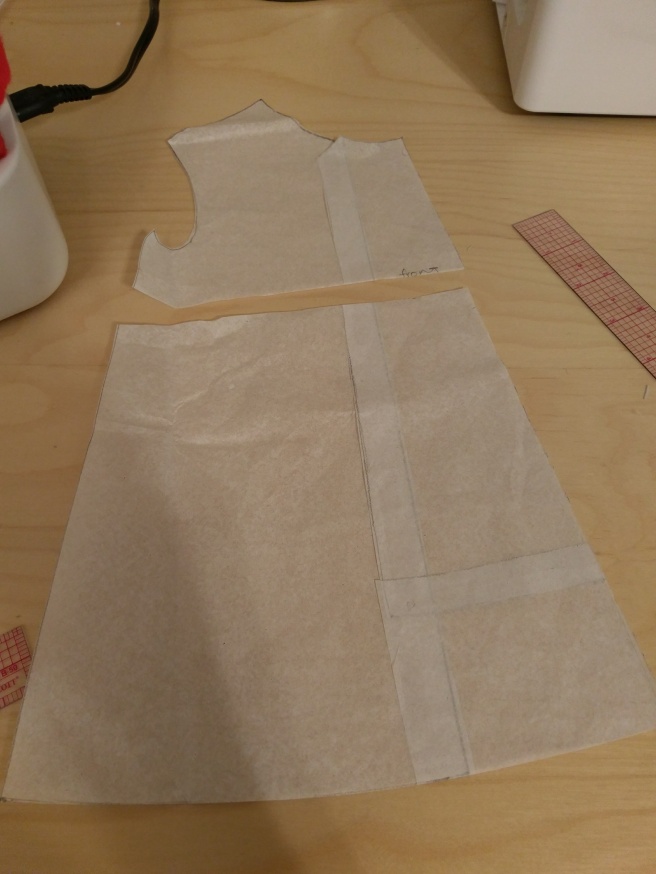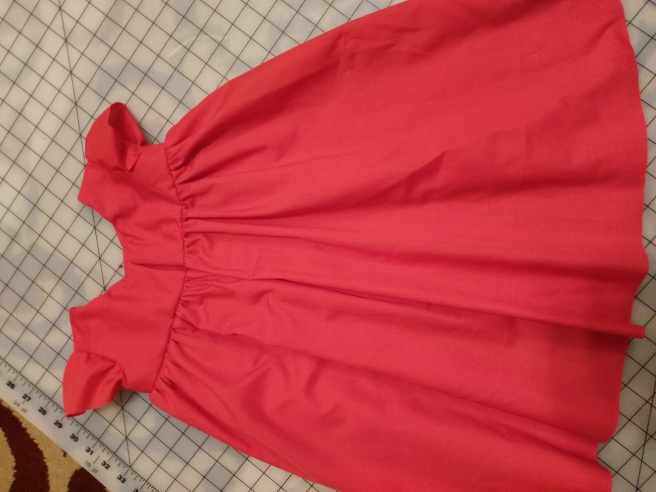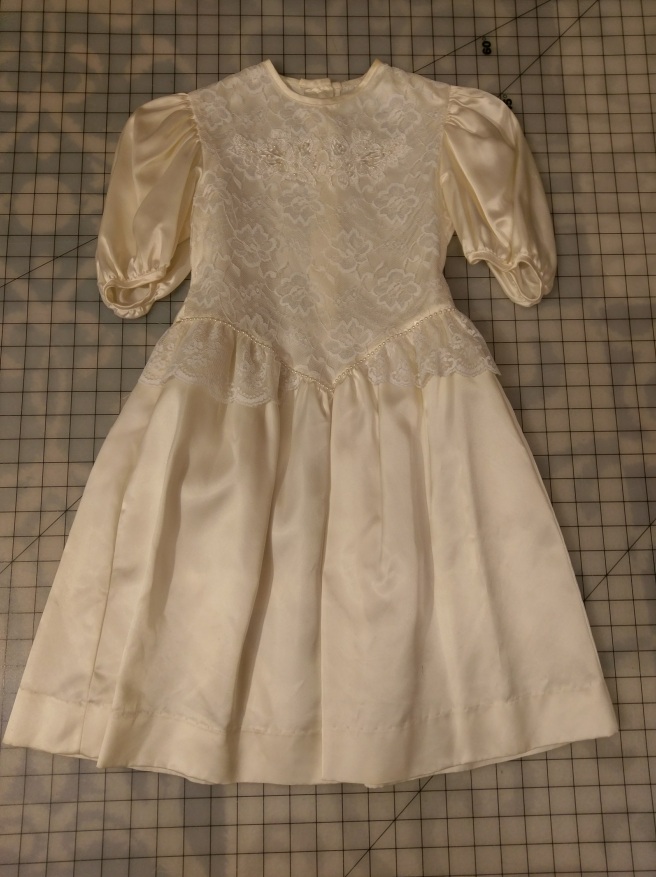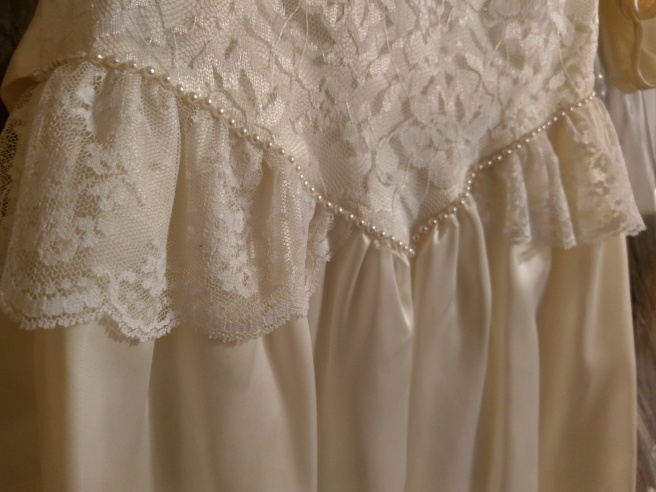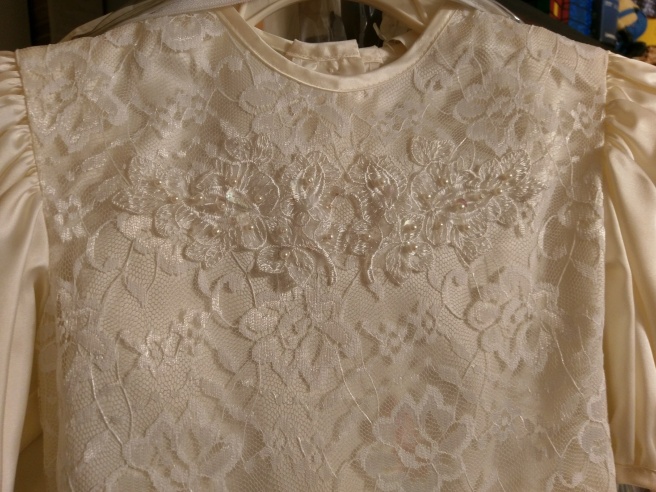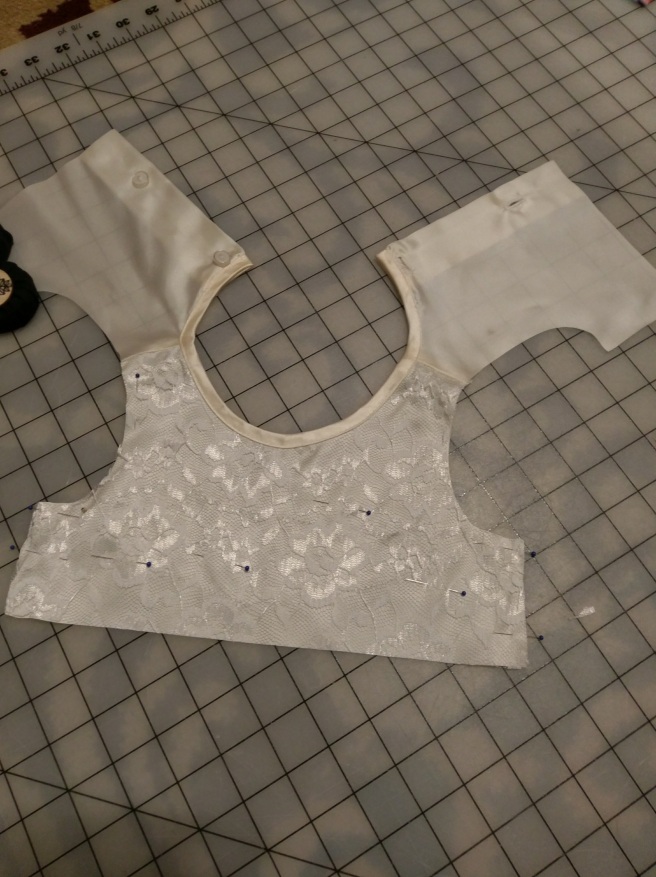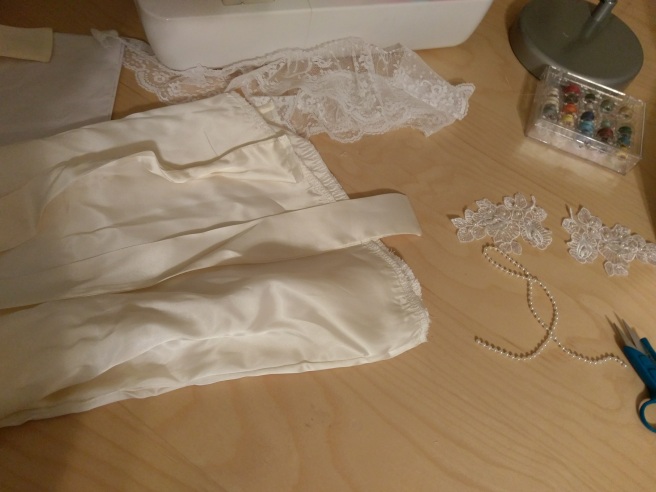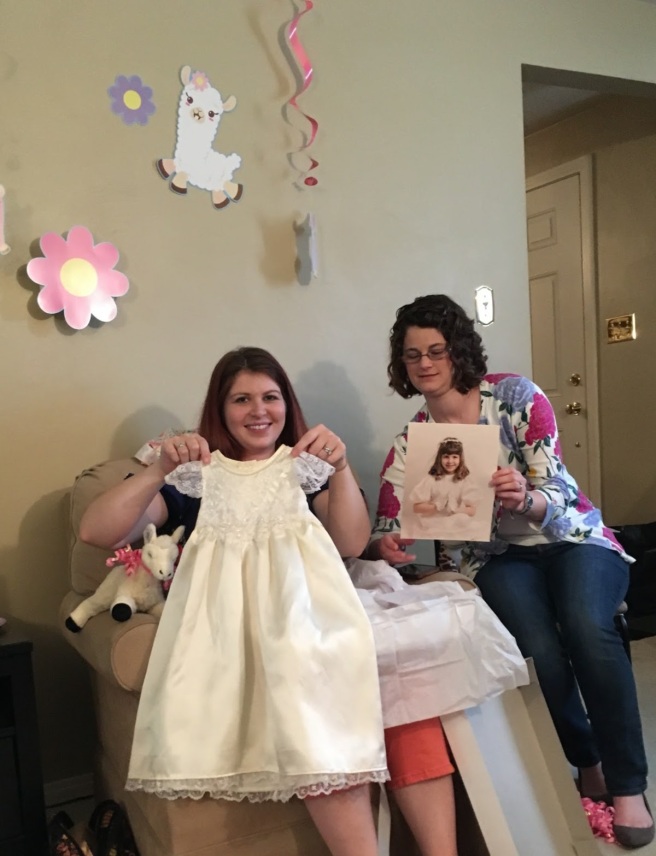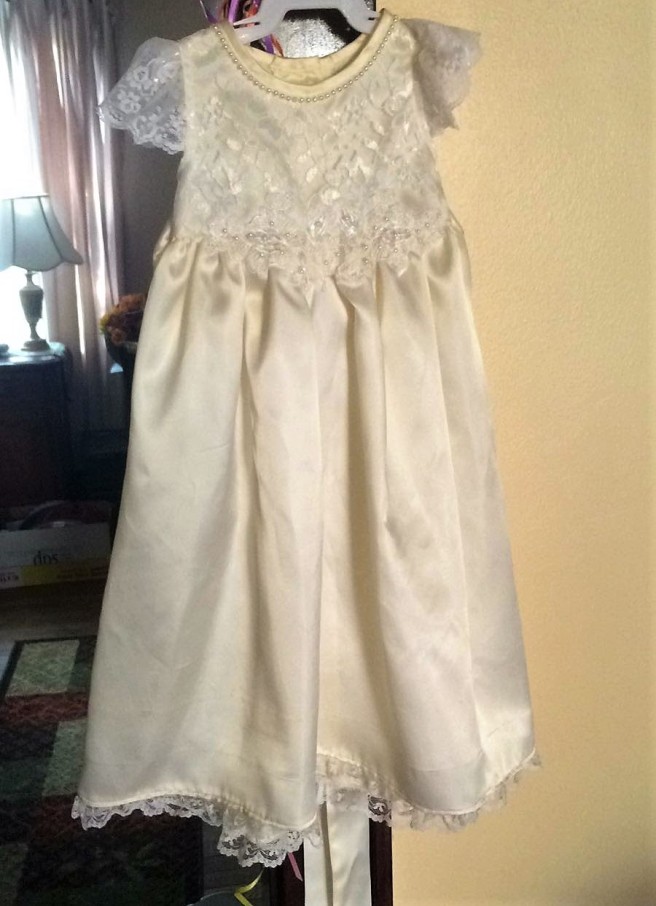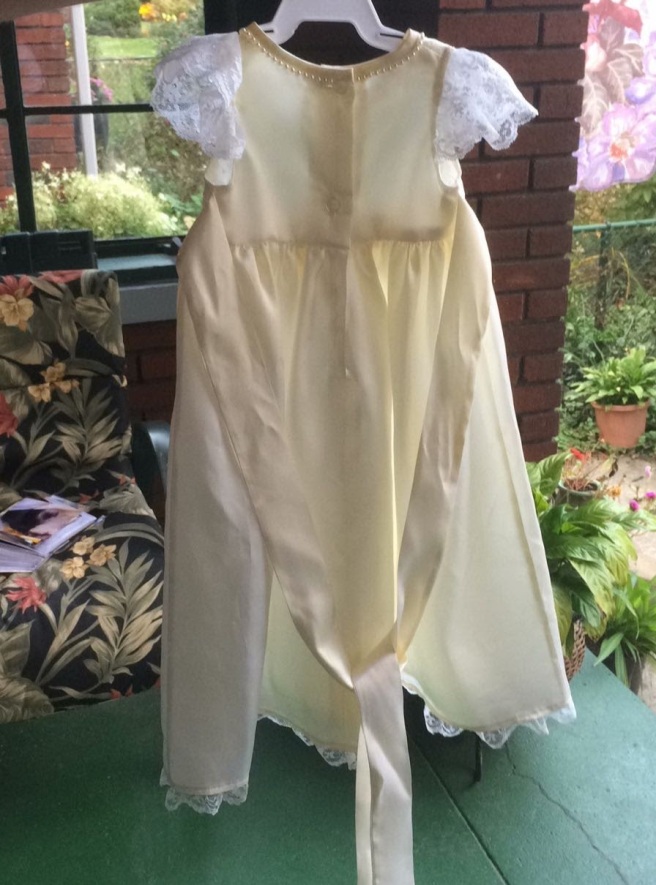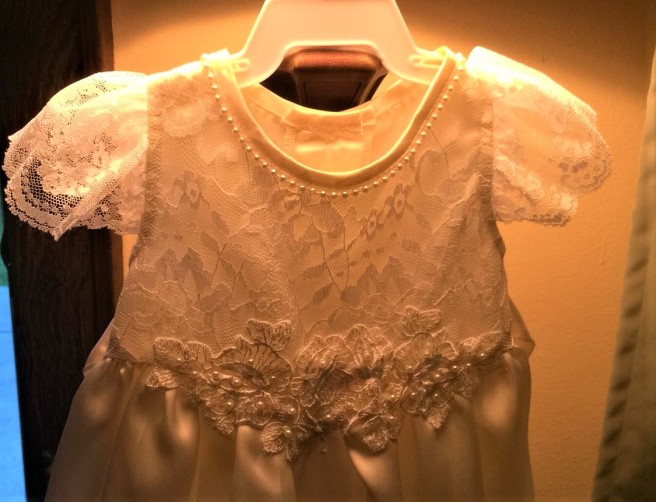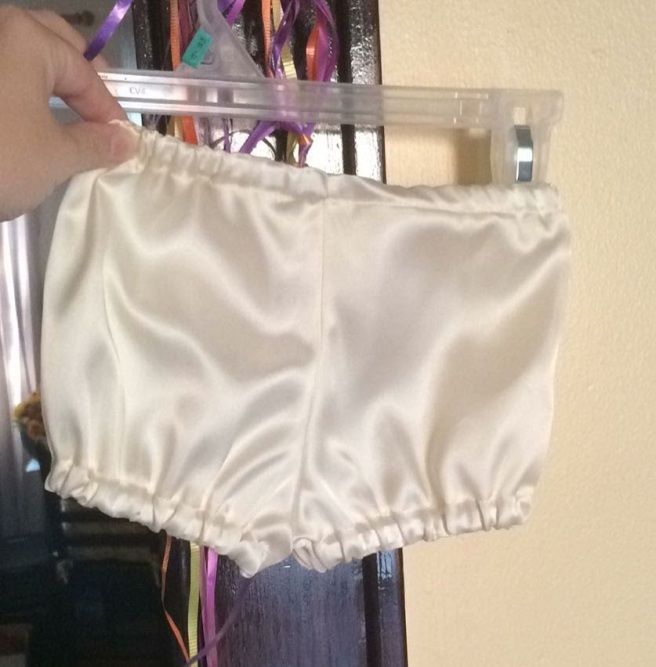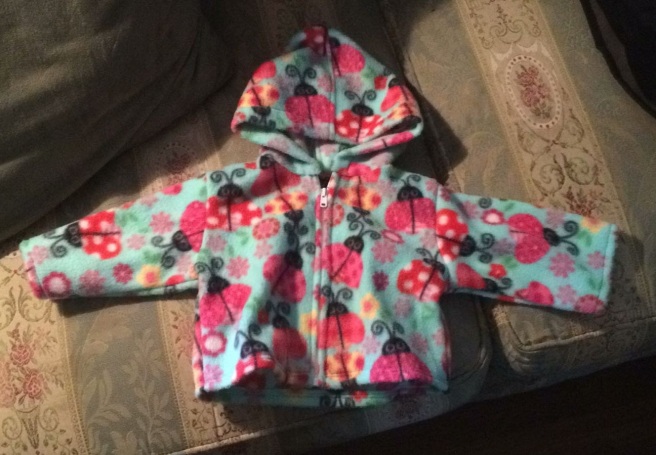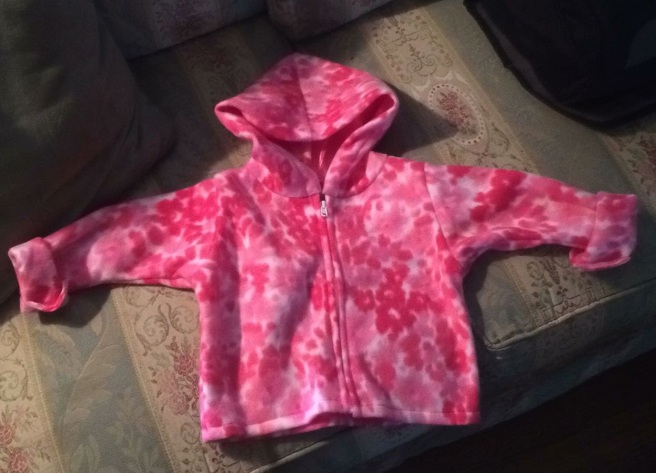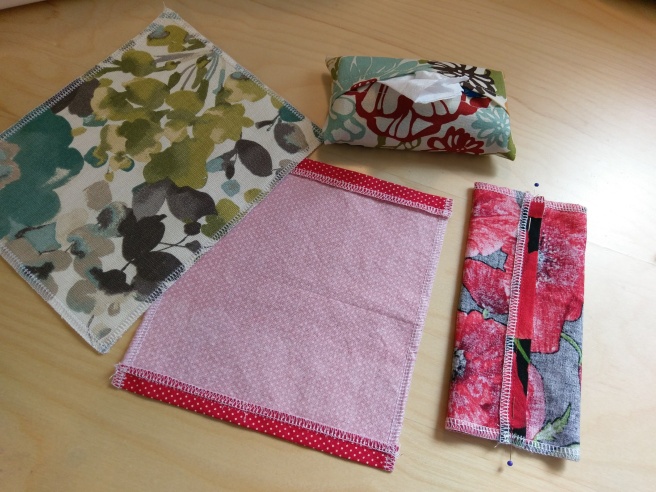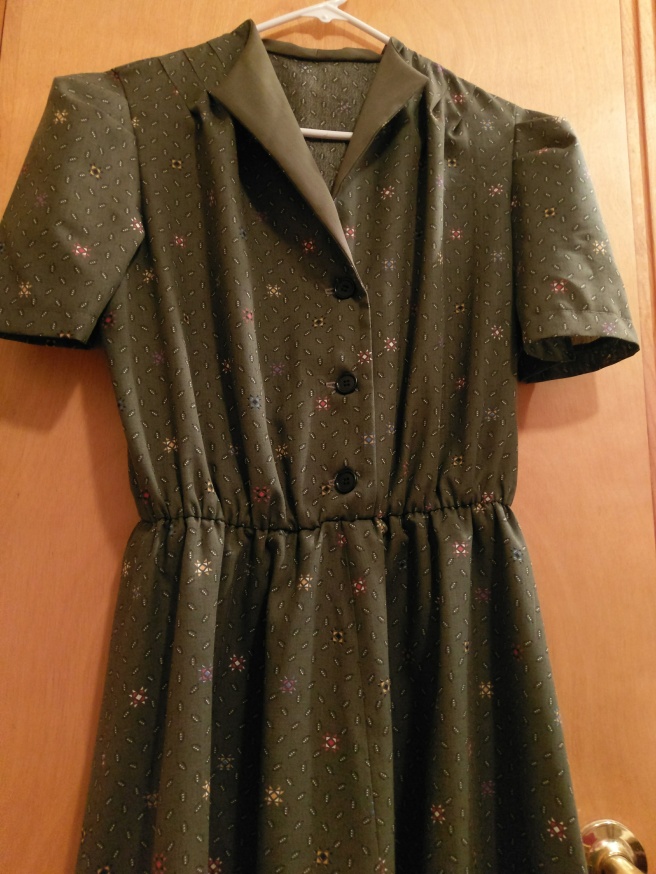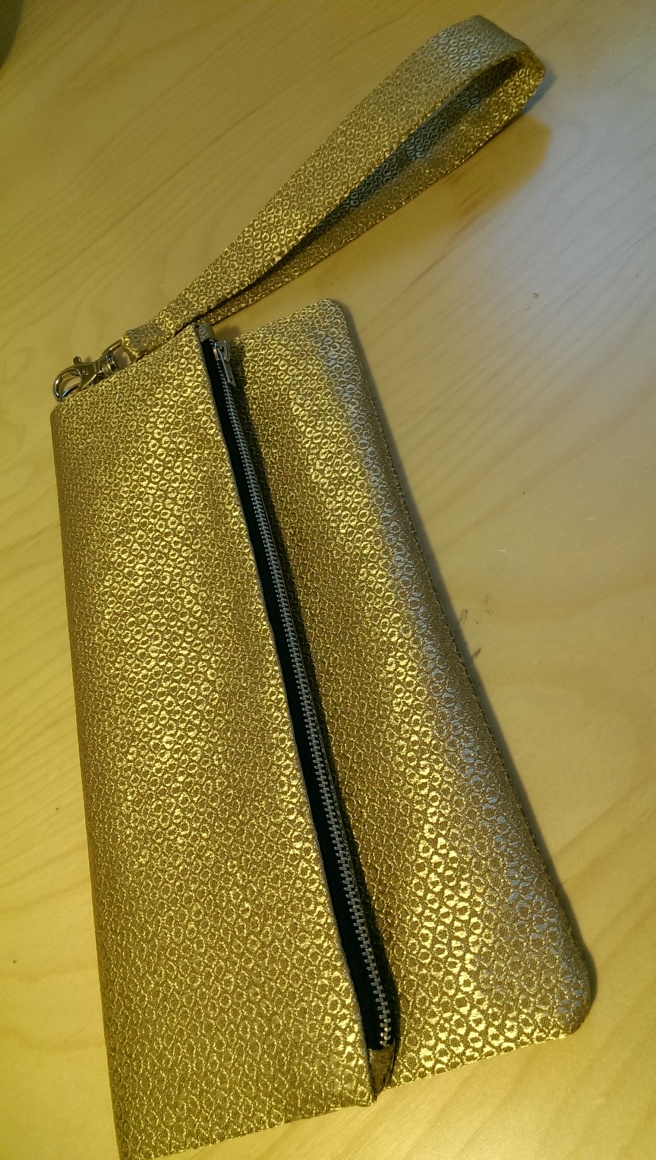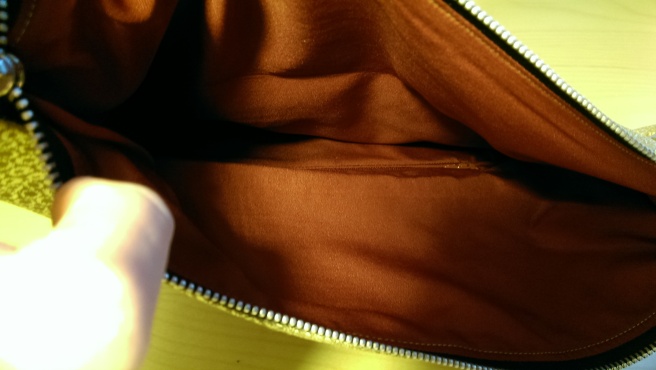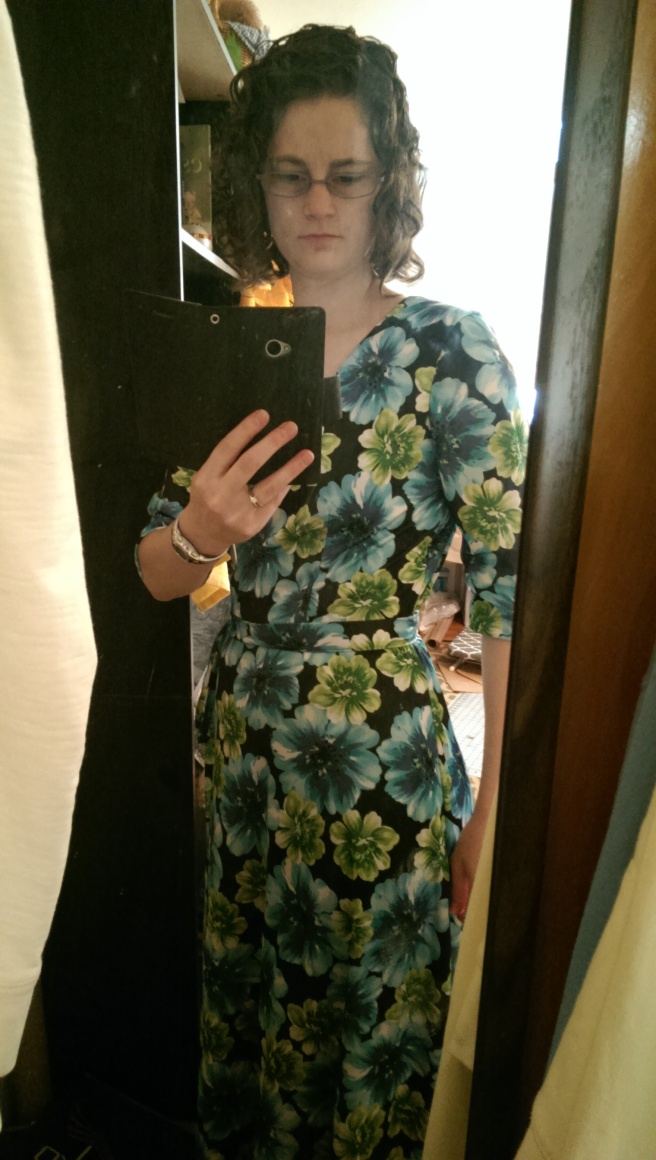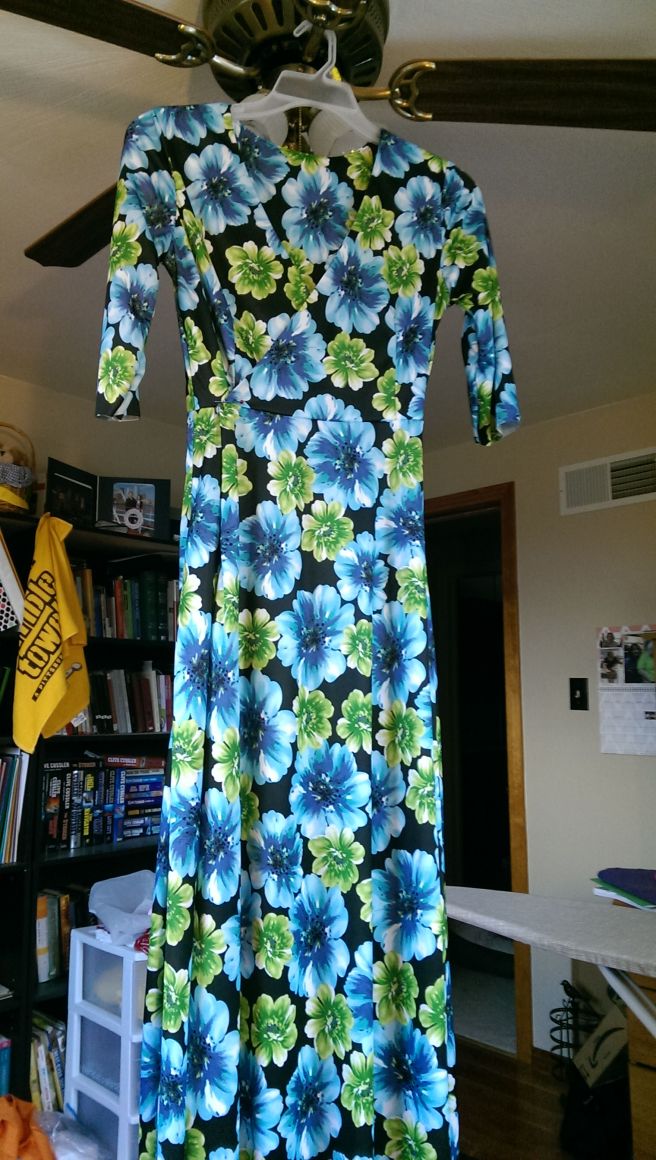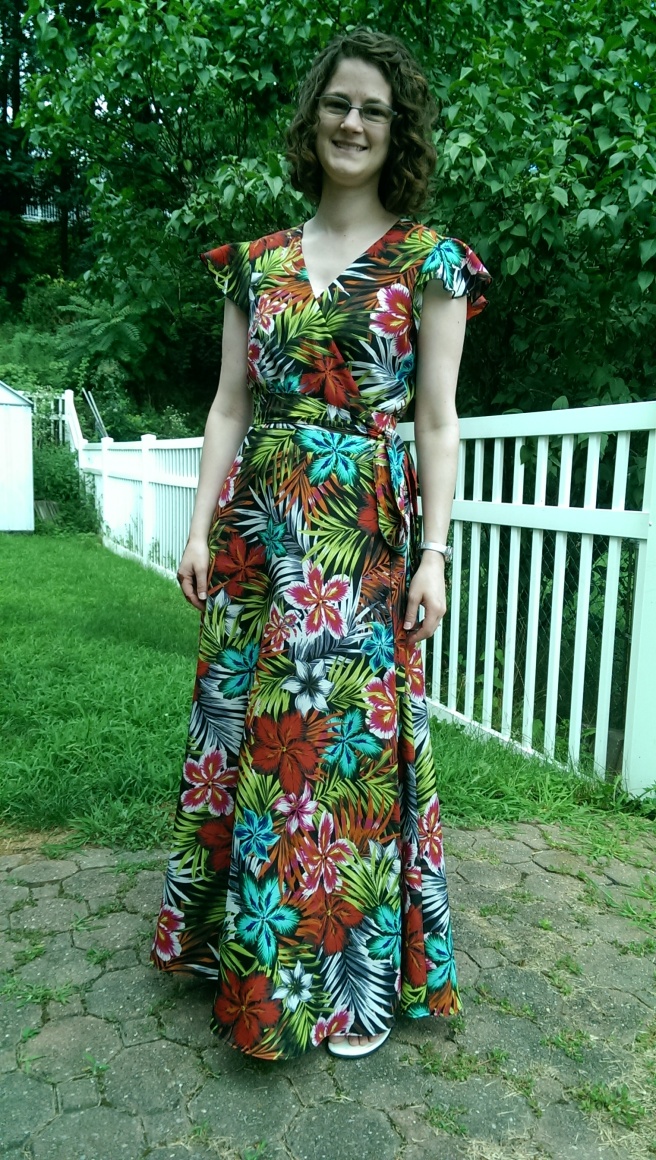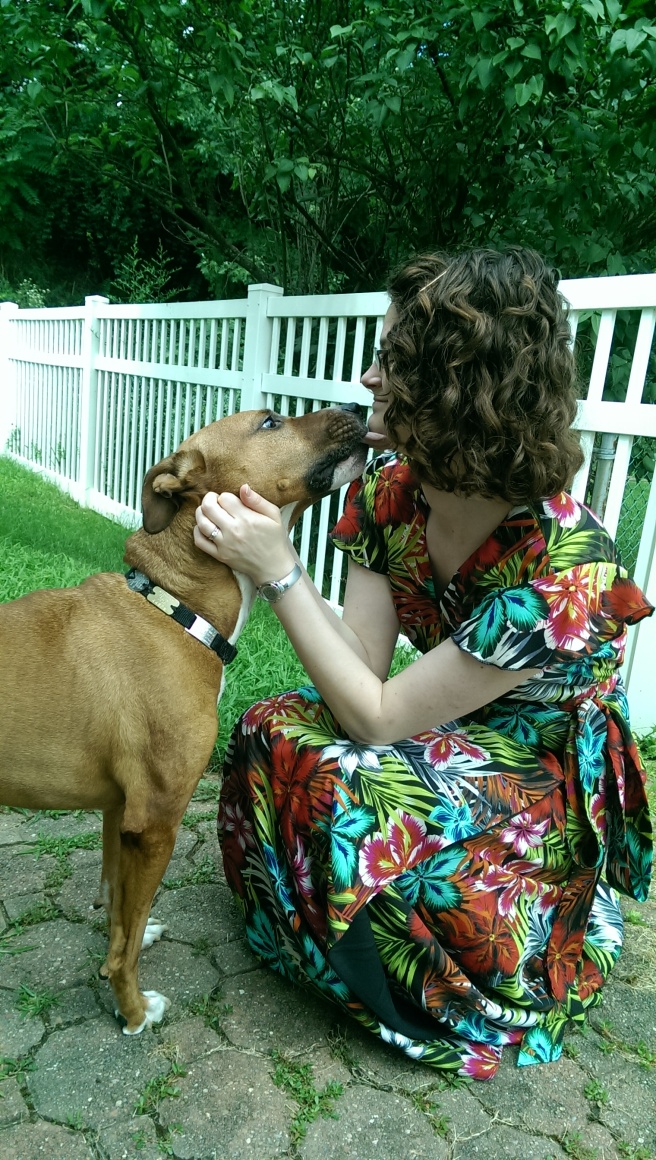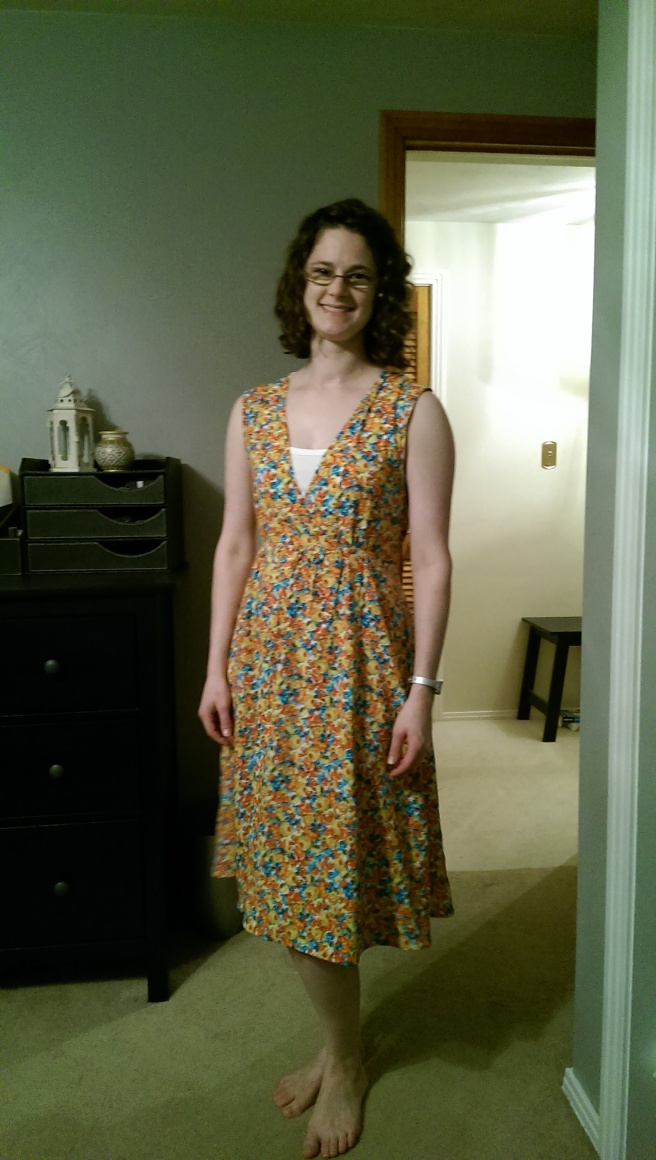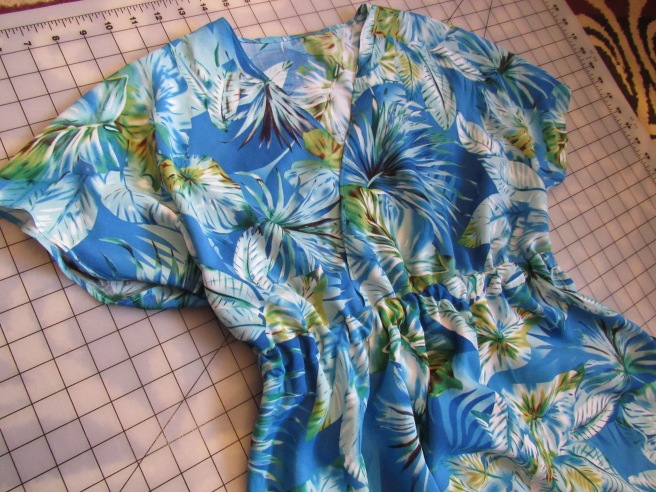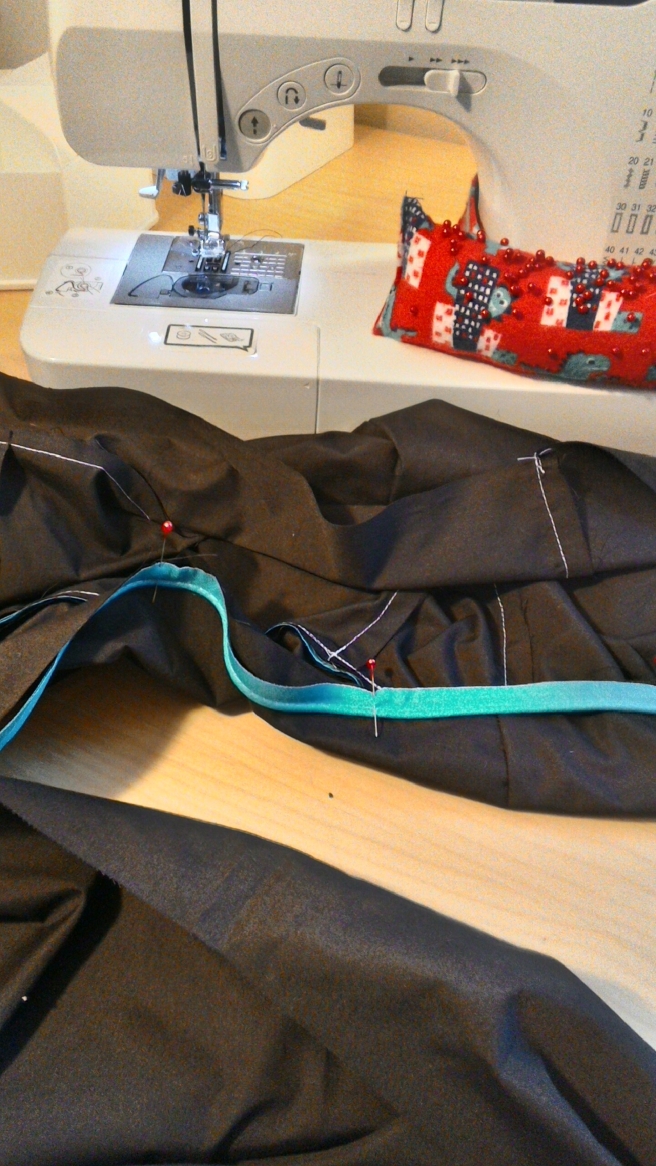**Edit** I never thought this post would get so much attention after I shared in one of my social media sewing groups! I’m so happy to see comments from all of you who have tried out sewing with minky using my tips! Please enjoy and stay creative! -J
Since I’ve been in school and training now for…. way too many years, my friends have all started having kids. So what do I do? Learn to sew baby blankets, of course! I fell in love with the fun flannel prints and the ultra soft and whimsical “minky dot” fabric at JoAnn, so that’s where it all started. My methods have gotten better over the years, and when I recently posted a photo of a finished blanket headed to my sister-in-law and my first niece overseas, I got SO many questions about how to work with minky and how I made my blanket. So, with the next blanket, headed to a dear friend in Seattle, I decided to take photos of every step and document my methods so anyone can give it a whirl.
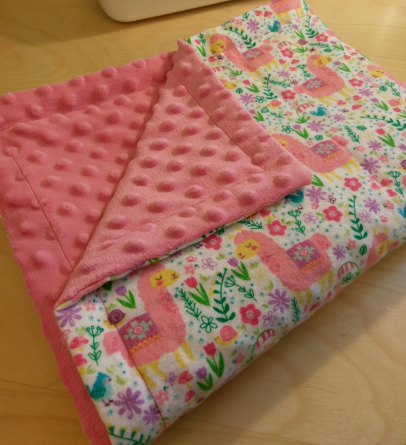
A note before starting: I choose to leave the two layers of my blankets loose with only a topstitch around the edge. I do not use batting between the layers or quilt them. My friends seem to like them the way I make them (my cousin’s son has carried his everywhere he goes for a solid 4 years now), and I’m not really sure that minky would take quilting very well because of how difficult it is to work with, so this is the method I stick to. Keep in mind, this is only what I have found works best for me. As always, your mileage may vary.
Enjoy!
Off camera- pre-wash and shrink your fabric. I tumble dry on low-medium to make sure the flannel shrinks up if it’s going to. If there are creases in the flannel, you can iron if you need to, but DO NOT IRON MINKY!!! It will melt and the dots will go away! Next, I square the flannel up and trim it to the size I want (here I did roughly 40″ x 40″, the “receiving” sized baby blanket) and finish the edges with my serger to make it more stable to work with. Next, the minky:
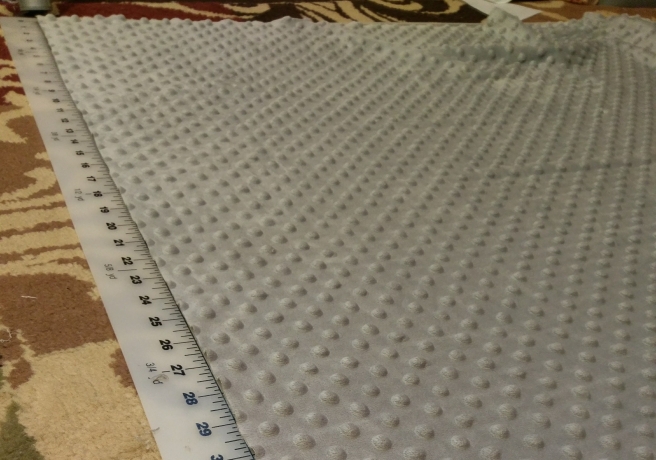
My secret weapon in the fight with minky fabric is a really really big cutting mat and a rotary cutter. It’s about 60 x 40″ on the floor of my sewing room. First, lay the minky out right side up on the mat and gently tug and smooth until there are no wrinkles, lining up the dots as best you can with a landmark like the bottom line on the mat. Trim the edge using the dots and the mat as a guide. If using scissors and no mat, use the dots as a guide and try to introduce as few wrinkles as possible while cutting, and re-adjust after each edge to keep it straight. Either way, it’s pretty much impossible to get it square without laying it out completely flat.
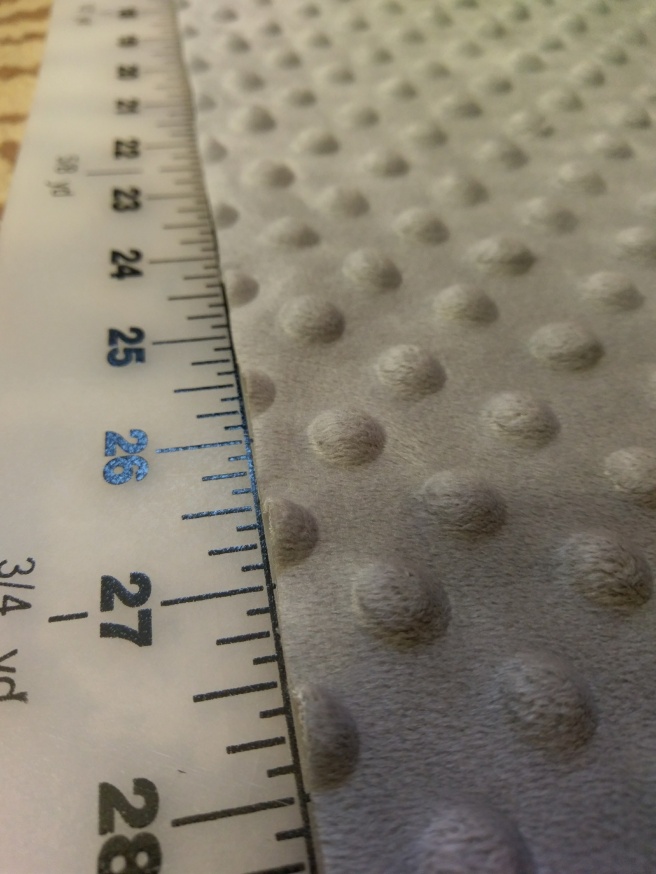
Next, lay your flannel on top, right side down (right sides together) and GENTLY make sure it is flat with no wrinkles, and without stretching or making wrinkles in the minky. Halfway through this process below- still a few wrinkles to smooth at the top. 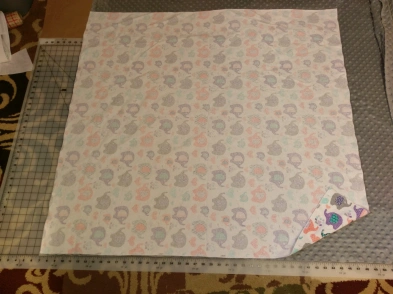
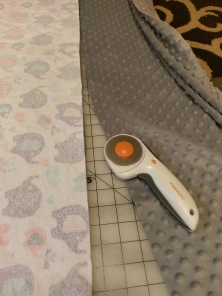
Cut around the flannel through the minky, following the dots as a guide if you think your flannel isn’t perfectly squared off, which can happen despite your best efforts!
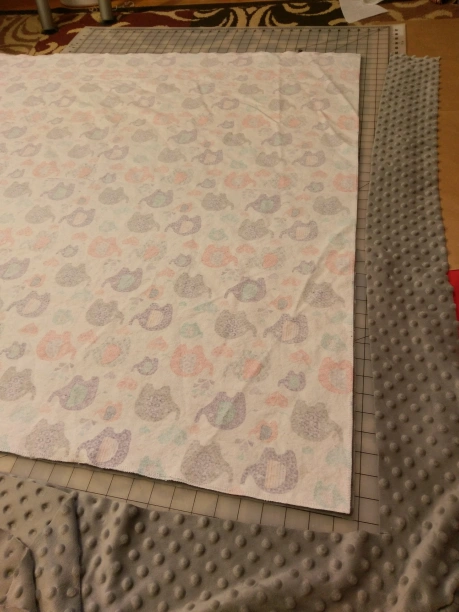
Next: pins, pins and more pins! I pin about every inch or so. You really can’t use too many pins. I like to start with the corners and middle of one side and divide each section in half with a pin, working my way out from the center halving the intervals as I go rather than starting at a corner and working my way straight up a side at 1″ intervals. For me, it keeps the side from bunching and stretching while I work.
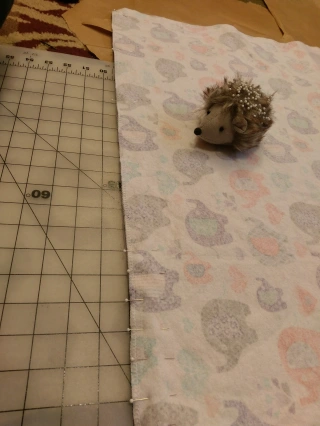
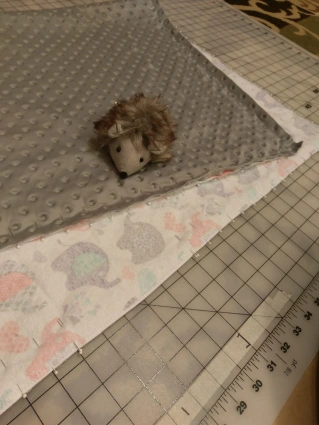
If you have to fold it over at any point while cutting or pinning to make it fit on your work space, be VERY careful not to introduce wrinkles between the layers. Don’t forget to leave a hole to turn it. I like to mark this with two pins so I don’t forget! 6″ was more than enough for this 40 x 40 blanket to fit through.
The next secret weapon is a walking foot. Here’s what it looks like if you’ve never used one. You will have to remove the ankle with your normal presser foot in order to attach it. The little lever sits on top of (or around, on some models) the bar that moves up and down while you sew. This drives a second set of feed dogs that interlock with your machine’s normal feed dogs. Instead of the bottom feed dogs gripping your fabric against the presser foot and sliding it backwards, the two sets of feed dogs grip from the top and the bottom and pick up and move the fabric without the sliding/pulling- this means that stretchy fabric will not be stretched out while sewing.
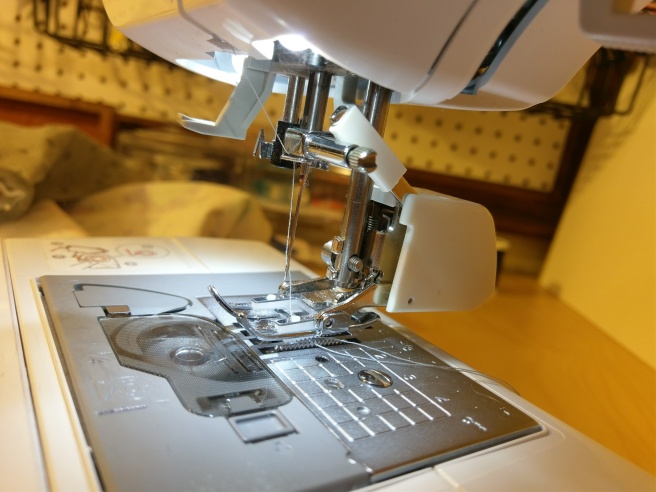
A closer look- you can see the second set of upper feed dogs in white plastic on my walking foot, positioned right over my machine’s lower feed dogs.
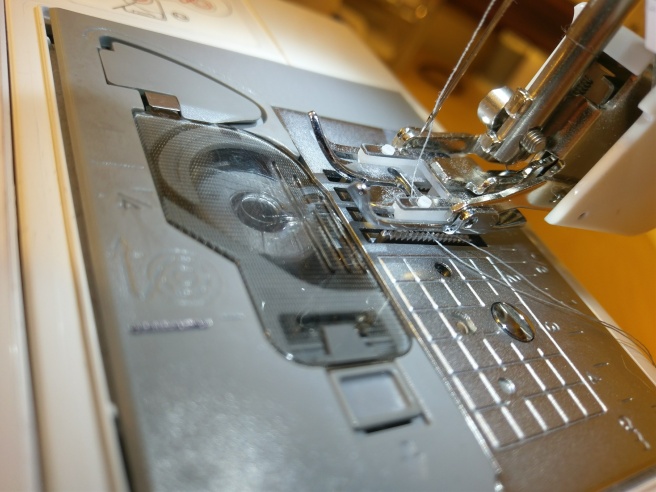
I highly recommend that you invest in a decent walking foot if you work with knits or minky with any frequency. You won’t regret it. My machine came with a walking foot, but it was poorly made, caught my fabric on a sharp piece of metal, and started malfunctioning after only a few uses. This (universal) one from the Husqvarna dealer at my local JoAnn has been a dream!
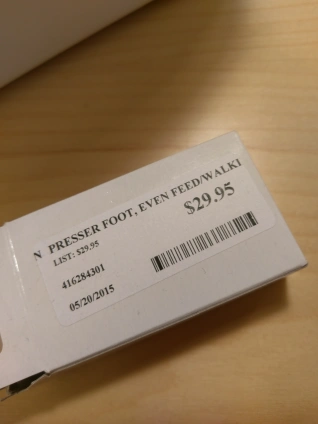
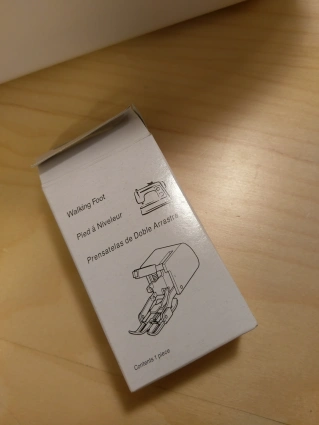
Sew the two sides together all the way around in one seam, starting at the opening you marked with two pins and stopping on the same side at the other end of the opening. I usually use a medium microtex needle, about an 80 or so. Here I used about 5/8″ seam allowances, but it really doesn’t matter as long as it is even. Before you pivot at the corners: see below for a trick for sharper corners.
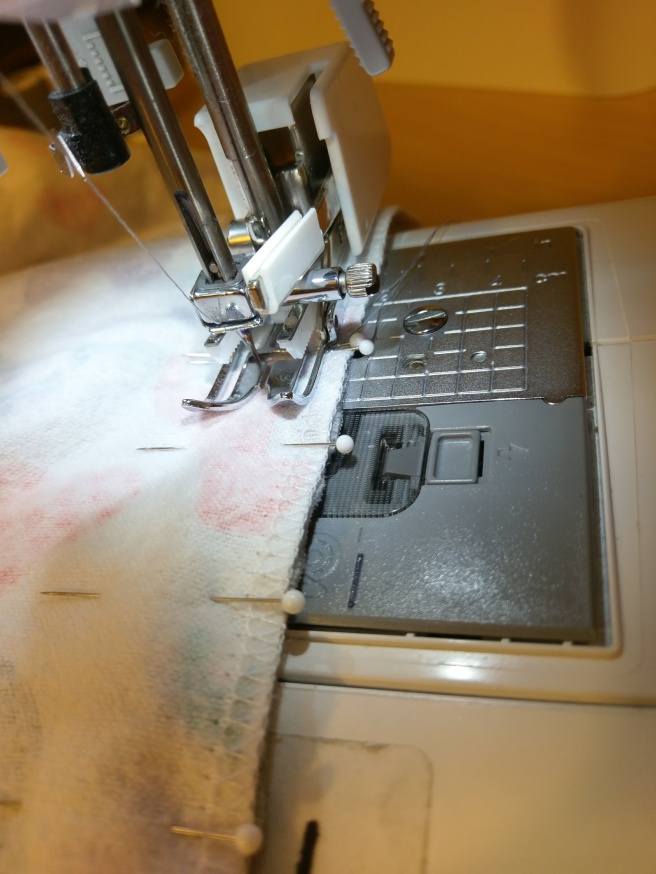
Minky trick #3 (you can use this elsewhere, too): at the corners, add a couple of stitches on the diagonal right at the tip of the corner. It’s counter intuitive, but it makes sharp corners later on. Trust me.
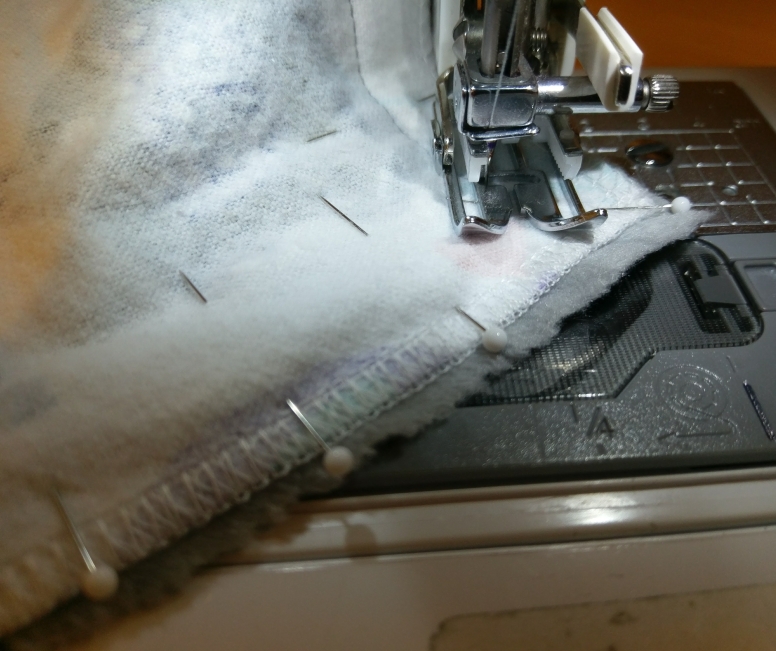
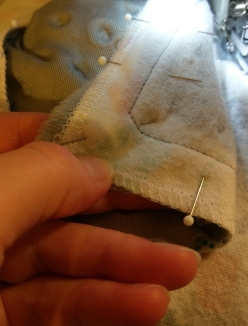
After finishing the main seam, if you want to make the slip-stitching easy on yourself, try this trick. It’s totally optional, but if your slip stitching gets as sloppy as mine, this really helps! Separate the layers and sew a guide-stitch through each layer separately. Make sure you use the same seam allowance that you just used on the rest of the blanket, and if your edges have become mis-aligned, then carefully account for this when you place your stitching in each separate layer.
I’m separating the layers in the opening to start the flannel guide stitch- you can see the minky guide stitch on the left at the bottom of the photo. It doesn’t matter what order you do them in, but I have better photos of guide-stitching the flannel side:
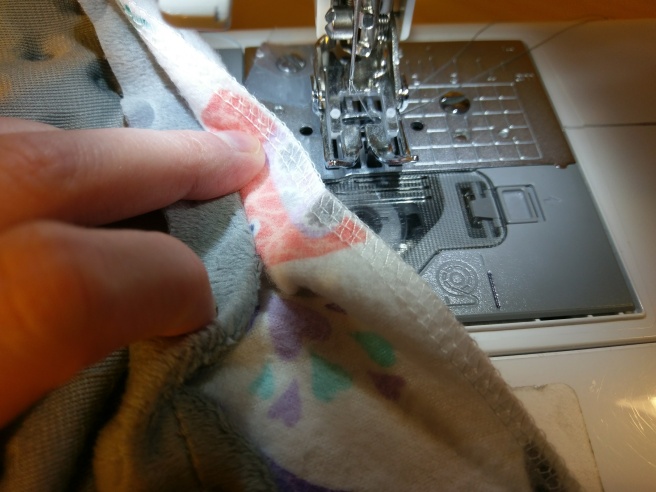
Fold the top layer back from the attachment point to get good exposure of the free flannel in the opening. 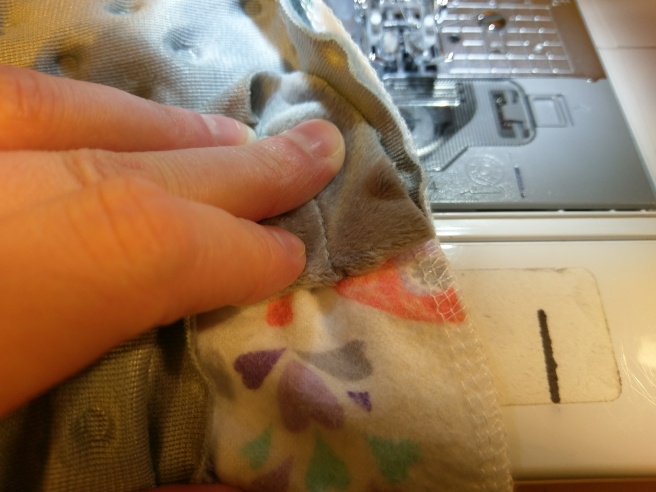
Place your needle as close to the point where the fabrics are joined, lining up your stitches with the previous seam, and sew through only one layer of fabric using the same amount of seam allowance. 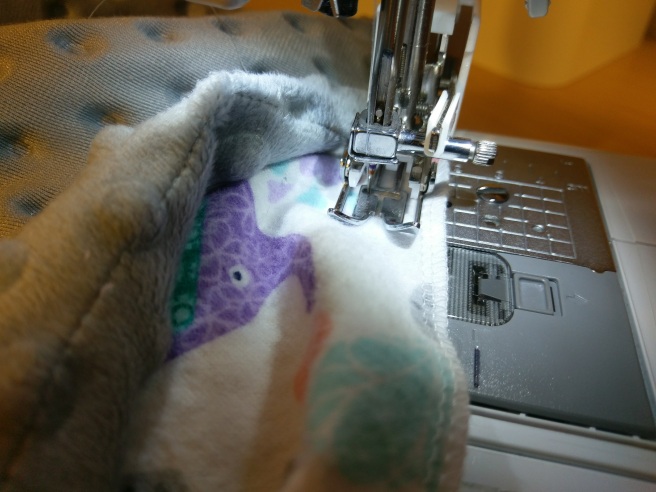
Stop short of your main seam, before you catch both layers of fabric, but your new stitching should line up with your previous seam almost exactly. 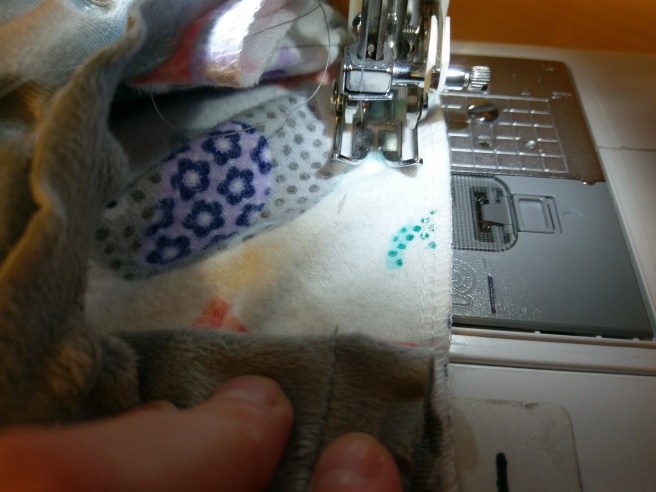
Repeat for the other side. You should end up with stitches in the opening, but not closing the opening, that you can use to align your slip stitches and keep them straight. 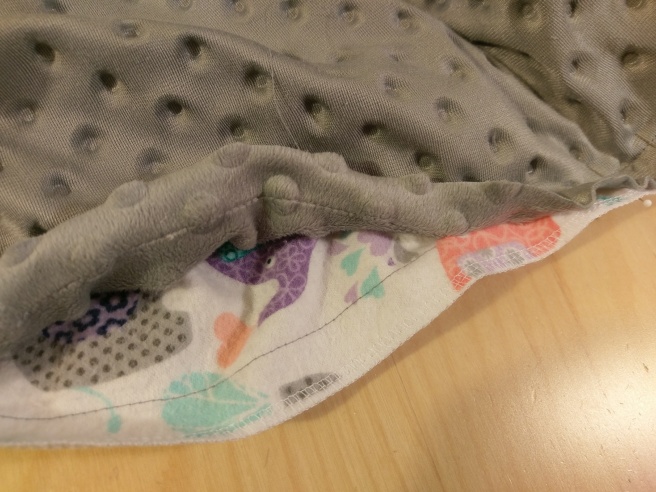
Now, back to those corners. You can either trim with scissors and zig-zag finish the free edge or, if you’re daring and you have good serging skills, you can just surge through the corner at an angle so that there is a very narrow margin between your seam and the serge, allowing the serger to cut away the excess.
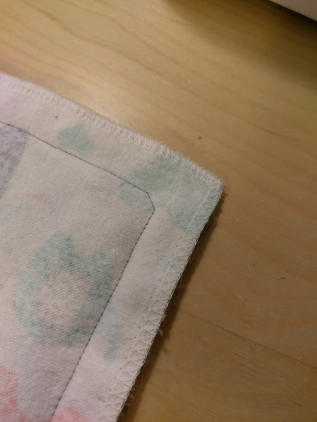
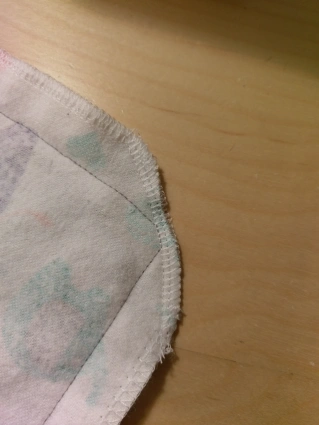
Using the opening, turn the blanket right side out and gently turn the corners with something pointed. The blunted, trimmed corner magically becomes sharp! Voila!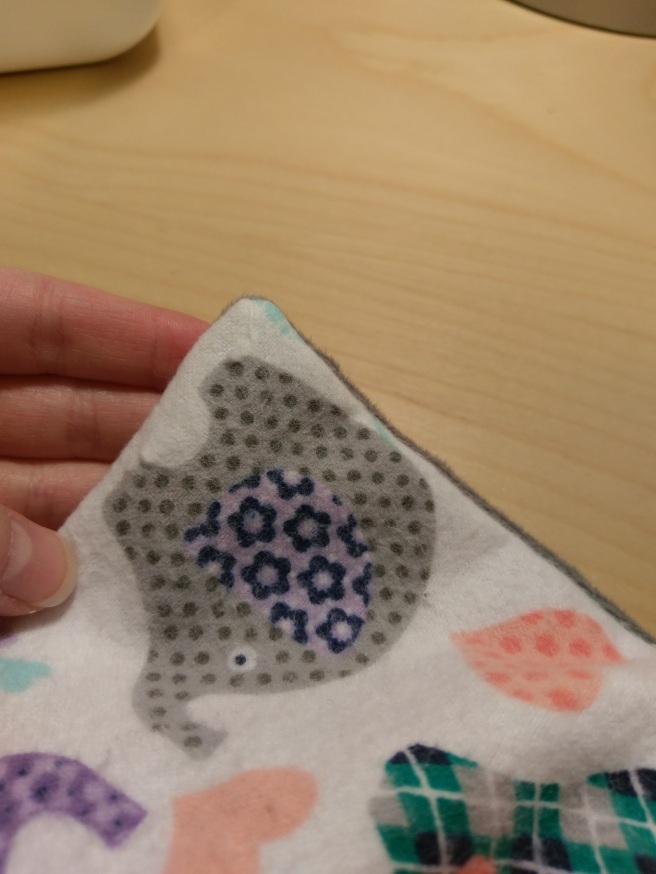
Now, fold in the edges of your opening and slip stitch that sucker closed. If you chose to add guide stitching, take your stitches slightly above your guide so that it remains tucked neatly inside your blanket. My slip-stitching improved 1000x the first time I did this. (On any other project, I might just iron a crease to follow, but since you can’t iron minky, this was my best solution!)
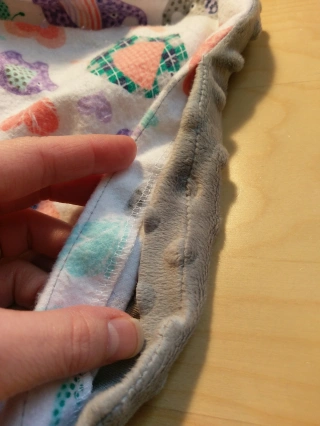
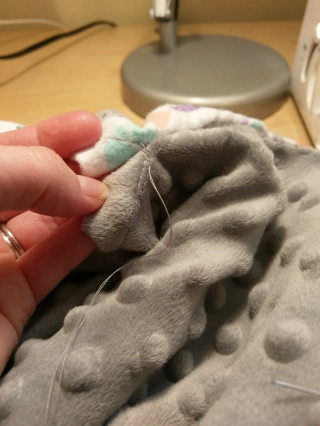
Now for the topstitch. I’m not completely happy with my topstitching, but it’s passable. I think I need to use heavier thread and a topstitching needle, but for now, I use the same thread and needle I use on the rest of the project. I chose a 1″ seam allowance/border, but I’ve done more in the past. It just depends on what you like. I find 1″ is easy to manage. Before you start, wiggle the layers of fabric into place at the edge so that the seam is right on the edge and there’s no excess fabric on one side or the other. Pin about 2″ apart to keep the fabric from sliding, and topstitch. For perfect corners, stop short of the next side and use a ruler to measure exactly where to pivot.
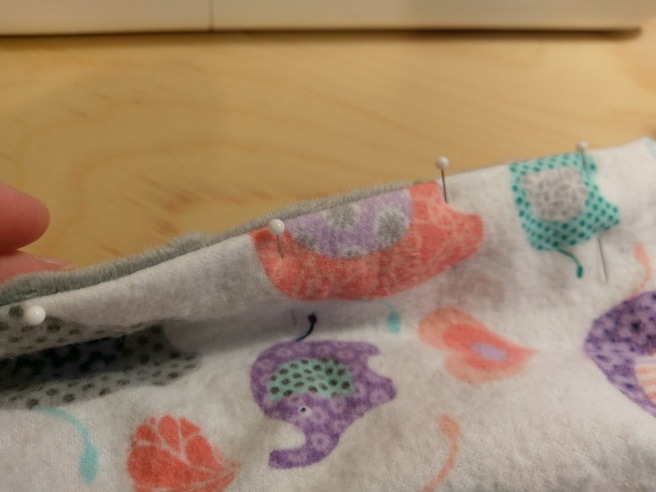
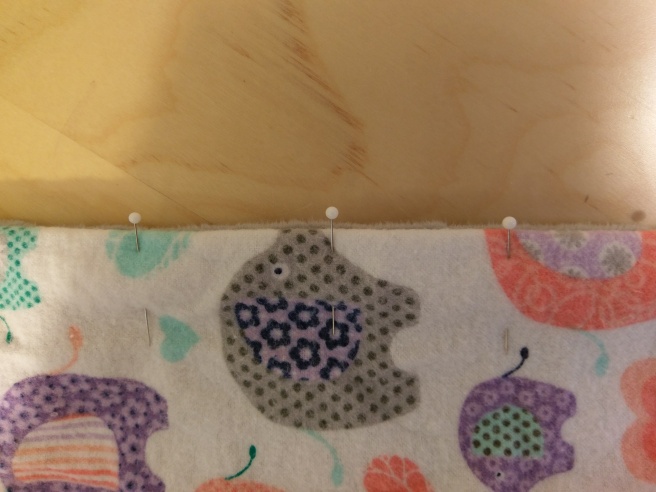
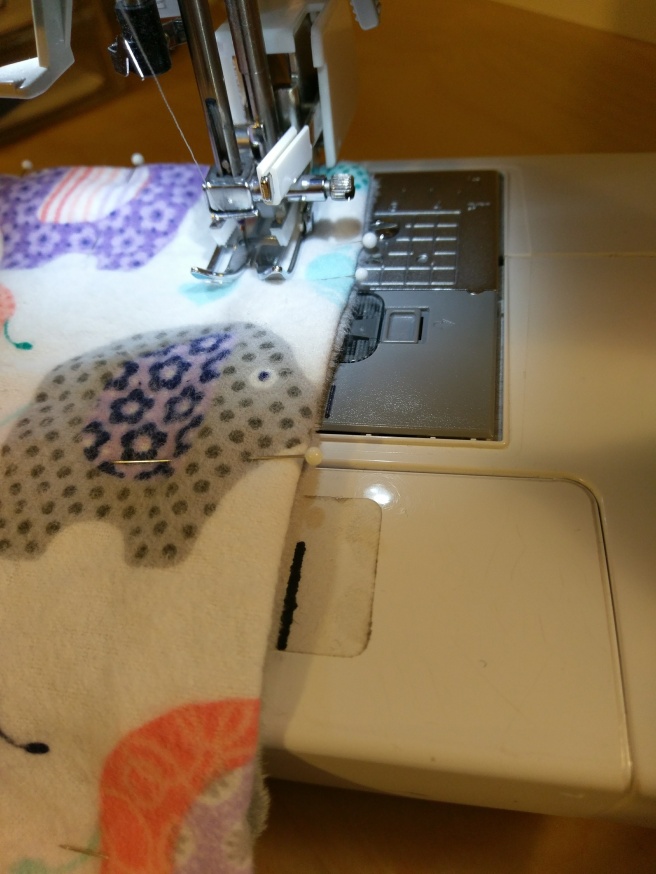
Tie off your threads and bury your tails in the border of the blanket and you’re done!
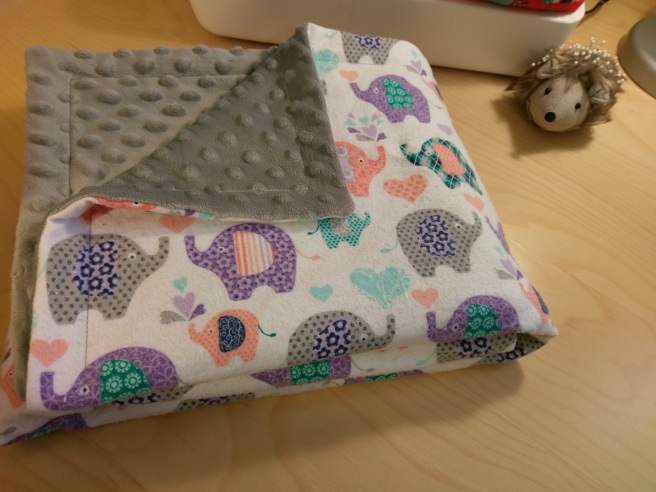
Now, go forth and create!
-J






